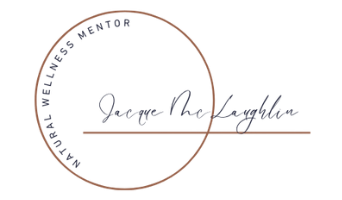Here's My Notes about making your own harsh-chemical-free dishwasher rinse aid!
We are Jacque & Doug McLaughlin, and we'd like to help you remove as many harsh chemical ingredients from your environment as is humanly possible! Here's our notes on the topic of Rinse Aids for dishwashers.
If you do not yet have a Young Living account and would like to get one, just click below. And feel free to Contact Me if you have any questions.

Rinse Aids for Dishwashers
What is Dishwasher Rinse Aid?
It’s a product that helps to prevent mineral deposits from hard water to make your dishes spotless. The convenience of these products is overshadowed by their toxicity. If you are serious about removing harsh chemicals from your home environment, this is one of those that most people don’t think about.
You can make your own and have the peace of mind in knowing that it’s better for you, your family AND the environment!
Let’s talk about how Rinse Aids work ~ they are actually supposed to leave a residue on your dishes so that the hard water just “slides off” and your dishes look pretty. But what about those harsh chemical residues? I don’t know about you, but I don’t want that stuff on my dishes, AND I don’t want to be washing some of it down the drain to be put back into the environment, either!
Let’s look at some of the harsh chemical ingredients found in a traditional dishwasher rinse aid:
- Artificial colors & Fragrance – The use of artificial dyes and fragrances are often to blame for allergic reactions and skin irritation.
- Isotridecyl Alcohol – not only is this chemical toxic to aquatic life, but it can cause skin and eye irritation
- Zinc Chloride – a salt that can cause respiratory irritation and nausea
- Sodium Hydroxide – this is another salt that is particularly corrosive and can also cause severe burns and eye damage.
- Benzenesulfonic acid – the idea of consuming an acid sounds crazy, right? This ingredient can also cause irritation to the respiratory tract as well as eyes and skin.
Everyone wants spot-free dishes, so they often add rinse aids to their shopping cart without realizing how it could be affecting their health.
The Good News is: there are natural alternatives that are also effective without harming you or the planet.
Let’s Look at the Benefits of Making Your Own!
- It works just as well, and there’s no harsh chemicals.
- You’ll save money! It’s super cheap to make.
- It’s Natural! We’ll use biodegradable ingredients that will be kind to you, your family, and the environment!
First Step: Clean Your Dishwasher
To set you up for success and ensure that your DIY Rinse Aid works like we want it to, let’s first clean the interior of your dishwasher (which is a good idea to do now and then, anyway). Did you know that appliance companies actually recommend citric acid for cleaning the dishwasher?
Here’s how to do it:
- Empty out the dishes so the dishwasher is empty.
- Clean out debris on the bottom of the dishwasher and the utensil holder.
- Fill the detergent cup in the dishwasher with citric acid.
- Run a deep clean wash cycle.
- Repeat a rinse cycle if there’s clumps from the citric acid.
- Repeat steps 1-5 if there’s mineral deposits and build up in the dishwasher.
Also, remove the filter at the bottom of the dishwasher and clean it with hot soapy water to remove food, debris, or build-up. Be sure to replace the filter before you use the dishwasher again.
Now, Let's See Some Alternatives
Vinegar:
Vinegar is so inexpensive, and is a perfect rinse aid because it works to remove the residue from your dishes and it also helps to keep your dishwasher naturally clean! No harsh chemicals here! Be sure you stick with less than 5% acetic acid vinegar so that it doesn’t erode the rubber parts of some dishwashers.
Hydrogen Peroxide:
This is an excellent rinse aid, because it not only works to help keep the spots on your dishes at bay, it also works against odors and is a disinfectant! For the best results, I recommend adding Young Living Lemon Oil – just a few drops will do – because it is a great natural degreaser. You can add the beautiful scent of fresh lemons and not worry about the harsh chemicals in artificial fragrances! Other oil options are: Thieves (our signature blend) Orange, or even Pine (for those who like the Pine smell when cleaning)
Just add 5 drops of your oil of choice to the hydrogen peroxide to the fill line in the dishwasher’s rinse aid receptacle. Then use your usual cleaning program and admire naturally spotless glassware and dishes.
Citric Acid:
Citric acid is odorless (so I like to add my Young Living essential oils to jazz it up a bit). You can find it in most grocery stores in liquid or powder form. Just add it to the rinse aid receptacle fill line + five drops of your essential oil of choice! Citric acid, balances pH levels, and also makes your detergent more effective. It’s effective as a de-scaler and disinfectant and works well in preventing mold & mildew.
Keep in mind it can leave residual clumps behind. One way to avoid this is to make a liquid version. Here’s how: Mix 1 tbsp citric acid with ¼ cup boiling water. This makes a liquid version that is easier to add to the rinse aid compartment and will minimize any leftover clumps.
Lemons or Lemon Juice:
I love lemons when I’m cleaning because the citric acid in them helps to break up mineral deposits and they cut through grease, all while leaving you with the fresh smell of lemons!
To use, add half a lemon or lemon wedges on the top rack during a wash. Alternatively, you can add lemon juice to the rinse aid compartment. I actually prefer to use Young Living Lemon oil in Vinegar and save my lemons for cooking, etc. But you can totally try it, if it sounds like a fit for you!


 Create a Life of Freedom In 10 Hours Per Week
Create a Life of Freedom In 10 Hours Per Week



